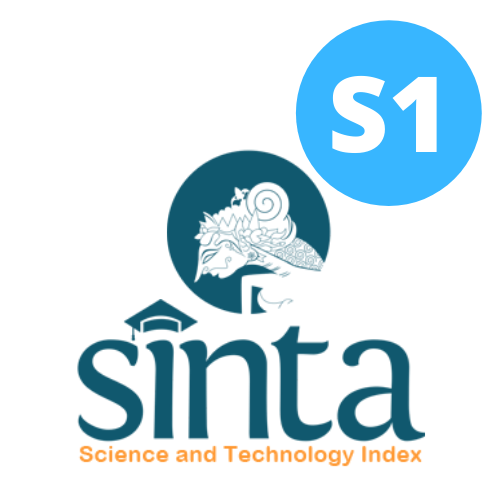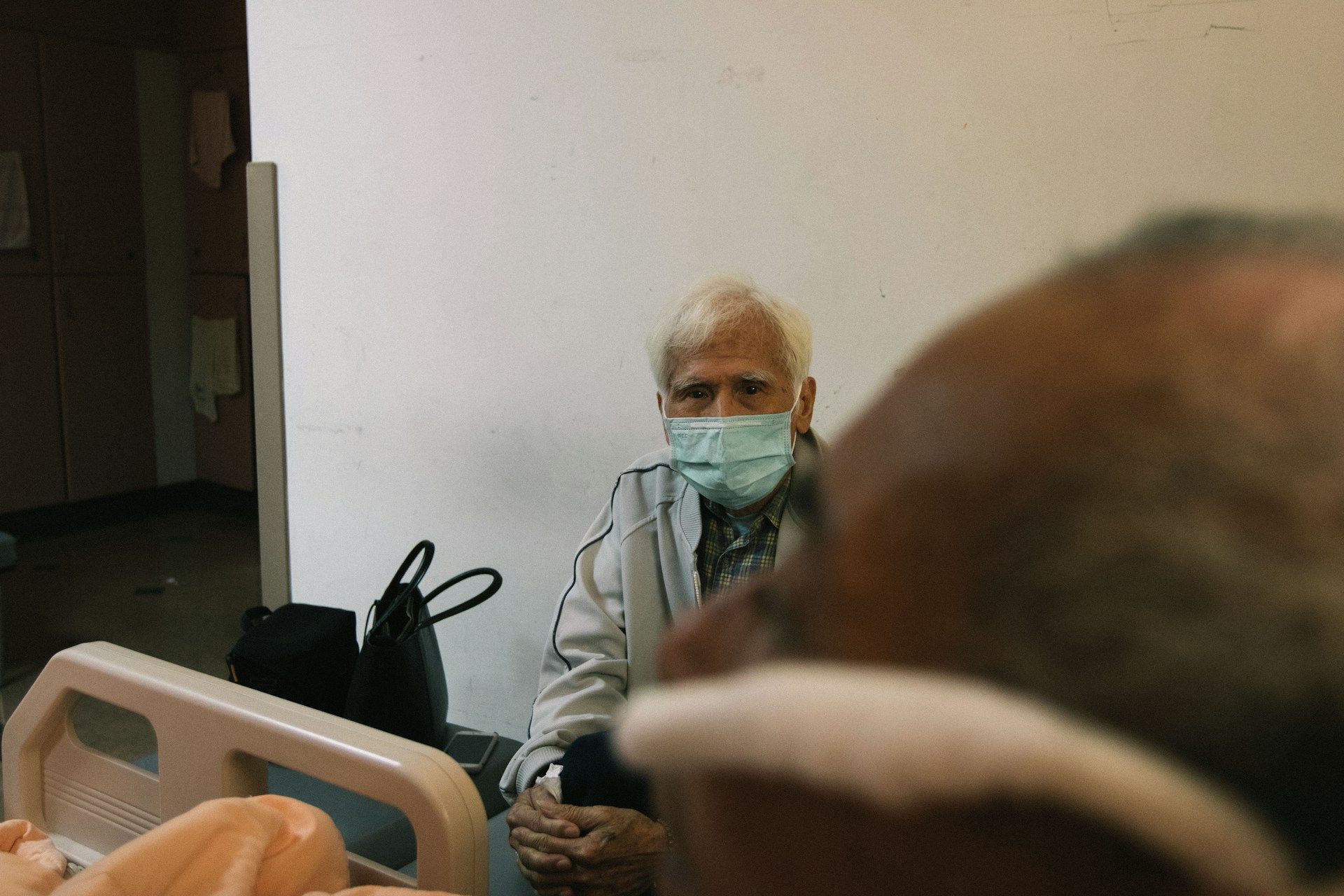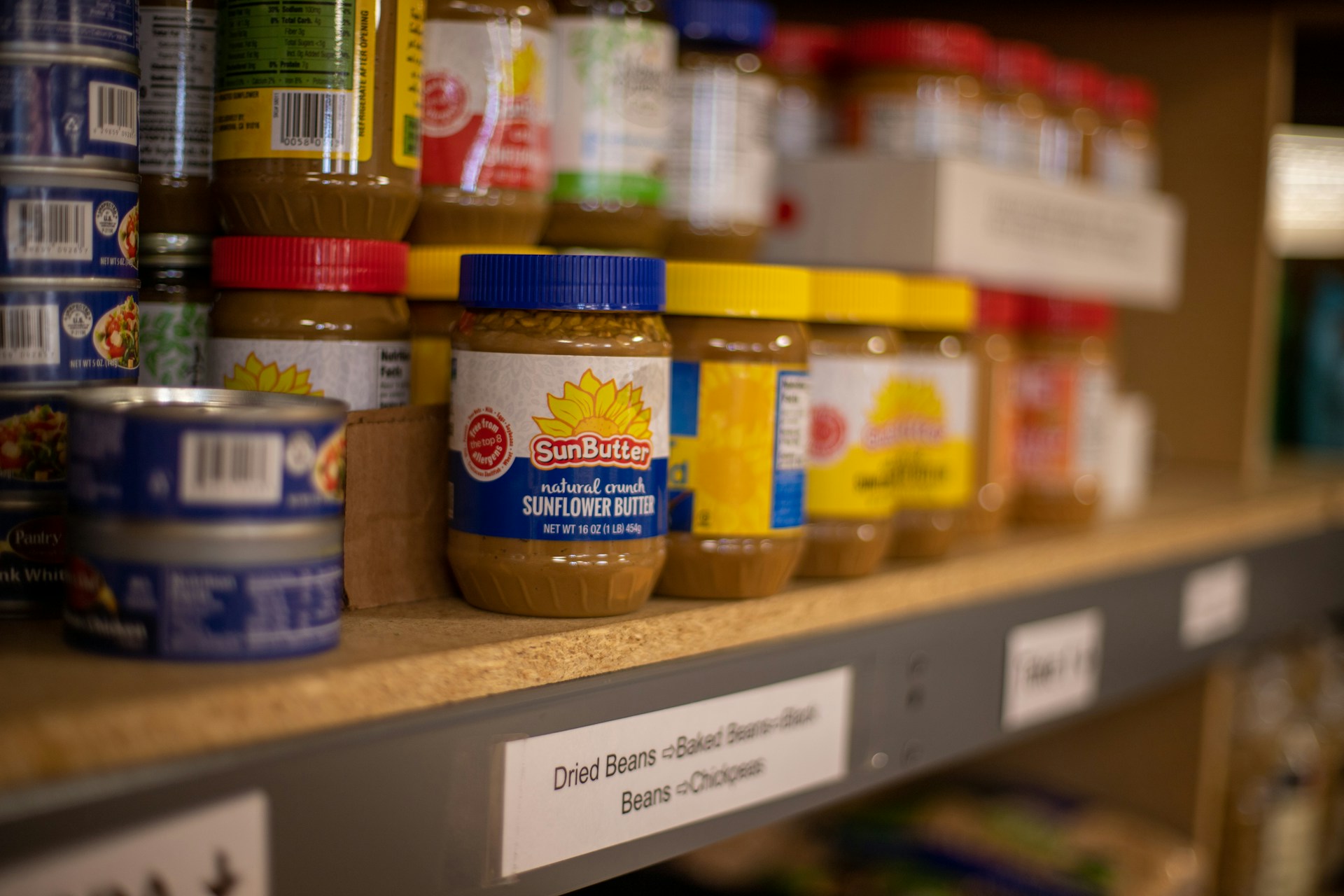Factors Related to Diet Quality in Adolescent at Yadika 12 High School Depok
Faktor-Faktor yang Berhubungan dengan Kualitas Diet Remaja di SMA Yadika 12 Depok

Downloads
Background: Adolescents, a group with high nutritional needs, are facing the triple burden of malnutrition. Depok has the highest prevalence of overweight adolescents in Indonesia. Data shows an increase in the consumption of high-fat and high-sodium foods. Technological advancements have made foods more accessible, in 2020 Indonesia had the highest food delivery service usage in Southeast Asia. These factors may negatively impact adolescent diet quality, leading to health issues and higher risks of degenerative diseases.
Objectives: This study analyzes the factors related to diet quality among adolescents at Yadika 12 High School Depok.
Methods: This quantitative study used a cross-sectional design conducted at Yadika 12 High School Depok with 108 respondents selected using stratified random sampling. The dependent variable was diet quality, while the independent variables included the frequency of food delivery services usage, high-risk consumption habits, and nutrition knowledge. Diet quality was measured using the Diet Quality Index for Adolescents (DQI-A). Other variables were assessed using questionnaires and a Food Frequency Questionnaire. Bivariate analysis performed using the Spearman test.
Results: Bivariate analysis indicated that the frequency of food delivery services usage (r=-0.044, p-value=0.654) is not associated with diet quality. In contrast, high-risk consumption habits (r=-0.256, p-value=0.007) and nutritional knowledge (r=0.217, p-value=0.024) associated with diet quality.
Conclusions: High-risk consumption habits and nutrition knowledge are factors related to the diet quality of adolescents at Yadika 12 High School Depok. Interventions and implementing balanced nutrition guidelines and other nutritional information can be effective steps to improve the diet quality of adolescents.
WHO. Adolescent-Health. https://www.who.int/es/health-topics/adolescent-health#tab=tab_1 (2016).
Badan Pusat Statistik Indonesia. Statistik Indonesia 2023. Statistik Indonesia 2023 1101001, 830 (2023).
Soeroso, S. Masalah Kesehatan Remaja. Sari Pediatri 3, 189 (2016).
Februhartanty, J., Ermayani, E., Rachman, P. H., Dianawati, H. & Harsian, H. Gizi Dan Kesehatan Remaja. (2019).
Hartanto, D., Matahari, R. & Nurfita, D. Modul Edukasi Remaja Generasi Milenial Bergizi. Eprints.Uad.Ac.Id (2020).
Widyawati. Gizi Optimal Untuk Generasi Milenial. Kementerian Kesehatan https://www.kemkes.go.id/id/rilis-kesehatan/gizi-optimal-generasi-milenial (2020).
UNICEF. Meningkatkan Gizi Remaja Di Indonesia. UNICEF Indonesia https://www.unicef.org/indonesia/media/9251/file/Ringkasan Eksekutif Strategi Komunikasi.pdf (2021).
Liu, J. et al. Consumption of Ultraprocessed Foods and Diet Quality Among U.S. Children and Adults. Am J Prev Med 62, 252–264 (2022) doi: 10.1016/j.amepre.2021.08.014.
Safitri, D. E., Yuliana, I. & Jannah, M. Analisis Kualitas Diet Anak Sekolah Di Indonesia Berdasarkan Dietary Quality Index-International (DQI-I). Universitas Muhammadiyah Prof. Dr. Hamka Jakarta 1–9 (2019).
Vyncke, K. et al. Validation Of The Diet Quality Index For Adolescents By Comparison With Biomarkers, Nutrient And Food Intakes: The HELENA study. British Journal of Nutrition 109, 2067–2078 (2013) doi: 10.1017/S000711451200414X.
Özcan, B. A., Yeşilkay, B., Yaldiz, N. & Pehliva, M. Factors Affecting Diet Quality In Adolescents: The Effect Of Sociodemographic Characteristics And Meal Consumption. Progress in Nutrition 22, 1–8 (2020).
Whatnall, M. et al. Diet Quality of Adolescents and Adults Who Completed the Australian Healthy Eating Quiz: An Analysis of Data over Six Years (2016–2022). Nutrients 14, (2022) doi: 10.3390/nu14194072.
Landais, E. et al. Consumption Of Food Away From Home In Low- And Middle-Income Countries: A Systematic Scoping Review. Nutr Rev 81, 727–754 (2023) doi: 10.1093/nutrit/nuac085.
Dinesh, T. Food Away from Home Market by Delivery Model (Dine in, Take Away, Home Delivery), by Application (Restaurants, Schools and Colleges, Hotels and Motels, Retail Stores and Vending, Others), by Type of Occasion (Entertainment, Travel, Retail, Freestanding),. https://www.alliedmarketresearch.com/food-away-from-home-market-A31829 (2023).
Keeble, M., Adams, J., Bishop, T. R. P. & Burgoine, T. Socioeconomic Inequalities In Food Outlet Access Through An Online Food Delivery Service In England: A Cross-Sectional Descriptive Analysis. Applied Geography 133, 102498 (2021) doi: 10.1016/j.apgeog.2021.102498.
Wikara, B. P. S. & Hidayati, U. Motif dan Pola Penggunaan Aplikasi Layanan Pesan Antar Makanan di Kalangan Mahasiswa Di Yogyakarta. Lektur, Jurnal Ilmu Komunikasi 6, (2023) doi: 10.21831/lektur.v6i1.19244.
Stephen, C. Food Delivery Platforms GMV in Southeast Asia grew to US$16.3 billion. Momentum Works https://thelowdown.momentum.asia/new-report-food-delivery-platforms-gmv-in-southeast-asia-grew-to-us16-3-billion/ (2023).
Jajak Pendapat. The Habit of Online Food Delivery. Jakpat Survey Report https://www.statista.com/outlook/dmo/online-food-delivery/worldwide?currency=usd#users (2022).
Martha, E. et al. Online Food Delivery Services Among Young Adults in Depok: Factors Affecting the Frequency of Online Food Ordering and Consumption of High-risk Food. Res Sq 1–11 (2021) doi: 10.21203/rs.3.rs-1103144/v1.
Kementerian Kesehatan. Laporan Riset Kesehatan Dasar (Riskesdas) 2018. (2018).
Briawan, D., Khomsan, A., Alfiah, E., Nasution, Z. & Putri, P. Edukasi Gizi Remaja Saat Terjadi Pergeseran Konsumsi Makanan Tradisional dan Fast Food di Indonesia. Policy Brief Pertanian, Kelautan dan Biosains Tropika 4, (2022) doi: 10.29244/Agro-Maritim.v4.i2.1.
Brown, R. et al. Examining The Correlates Of Adolescent Food And Nutrition Knowledge. Nutrients 13, 1–13 (2021) doi: 10.3390/nu13062044.
Asmiranti, St.Masithah, Suherman & Nurcahyani, I. dian. Penerapan Gizi Seimbang Selama Masa New Normal Covid-19 Di Ma Ddi Alliritengae Maros. PREPOTIF Jurnal Kesehatan Masyarakat 5, (2021) doi: 10.31004/prepotif.v5i1.1521.
Lestari, P. Y., Tambunan, L. N. & Lestari, R. M. Hubungan Pengetahuan tentang Gizi terhadap Status Gizi Remaja. Jurnal Surya Medika 8, (2022) doi: 10.33084/jsm.v8i1.3439.
Kementerian Kesehatan. Laporan Provinsi Jawa Barat. Badan Penelitian dan Pengembangan Kesehatan (2018).
Marjan, A. Q., Simanungkalit, S. F., Malkan, I. & Ilmi, B. Aksi Bergizi untuk Mewujudkan Remaja Bebas Anemia dan Stunting di Kota Depok. 12, 1150–1160 (2023).
Ayu, T. P., Simanungkalit, S. F., Immatul Fauziyah, A. ’ & Wahyuningsih, U. Hubungan Asupan Serat, Kebiasaan Konsumsi Junk Food, dan Durasi Tidur dengan Gizi Lebih pada Remaja Associations of Fiber Intake, Junk Food Consumption Habits, and Sleep Duration with Overweight in Adolescents. Jurnal Kesehatan 14, 432–440 (2023) doi: 10.26630/jk.v14i3.3942.
Ledikwe, J. H. et al. Dietary Energy Density Is Associated With Energy Intake And Weight Status In US Adults. American Journal of Clinical Nutrition vol. 83 (2006) doi: 10.1093/ajcn/83.6.1362.
Kementerian Kesehatan. Peraturan Menteri Kesehatan Nomor 41 Tahun 2014. Peraturan Menteri Kesehatan Nomor 41 tahun 2014 vol. Nomor 41 (2014).
Vidyarini, A. Skor Diet Quality Index for Adolescent Remaja Usia 15 – 18 Tahun Di Jakarta. Pontianak Nutrition Journal 5, 177–182 (2022) doi: 10.30602/pnj.v5i1.922.
Miskiyah, A. & Briawan, D. Kualitas Diet, Aktivitas Fisik, dan Status Gizi Remaja Selama Masa Pandemi Covid-19 di Kota Bogor. Jurnal Ilmu Gizi dan Dietetik 1, (2022) doi: 10.25182/jigd.2022.1.1.8-15.
Maretha, F. Y., Margawati, A., Wijayanti, H. S. & Dieny, F. F. Hubungan Penggunaan Aplikasi Pesan Antar Makanan Online Dengan Frekuensi Makan Dan Kualitas Diet Mahasiswa. Journal of Nutrition College 9, (2020) doi: 10.14710/jnc.v9i3.26692.
Layalia, N. & Stefani, M. Hubungan Penggunaan Aplikasi Pesan Antar Makanan Terhadap Risiko Obesitas Pada Mahasiswa Di Derah Jabodetabek. Amerta Nutrition 7, (2023) doi: 10.20473/amnt.v7i2SP.2023.155-163.
Fadila, R. N., Puspita, A. E. & Nurjannah, S. Persepsi Mahasiswa Universitas Siliwangi Angkatan Tahun 2019 Pada Penggunaan Online Food Selama Pandemi Covid-19. Jurnal SITECH : Sistem Informasi dan Teknologi 5, (2022) doi: 10.24176/sitech.v5i1.7960.
Osaili, T. M., Al-Nabulsi, A. A., Taybeh, A. O., Ismail, L. C. & Saleh, S. T. Healthy Food And Determinants Of Food Choice On Online Food Delivery Applications. PLoS One 18, (2023) doi: 10.1371/journal.pone.0296114.
Devine, L. D., Gallagher, A. M., Briggs, S. & Hill, A. J. Factors That Influence Food Choices In Secondary School Canteens: A Qualitative Study Of Pupil And Staff Perspectives. Front Public Health 11, (2023) doi: 10.3389/fpubh.2023.1227075.
Ghaffar, S. A. et al. Food Choices and Diet Quality in the School Food Environment: A Qualitative Insight from the Perspective of Adolescents. Malaysian Journal of Medicine and Health Sciences 15, 2636–9346 (2019).
McHugh, C. A., Anderson, L., Lloyd, J., Logan, S. & Wyatt, K. Influences On Diet And Physical Activity Choices Of 11–13-Year-Olds In A School Setting. Health Educ J 78, (2019) doi: 10.1177/0017896919826606.
Calvert, S., Dempsey, R. C. & Povey, R. A Qualitative Study Investigating Food Choices And Perceived Psychosocial Influences On Eating Behaviours In Secondary School Students. British Food Journal 122, (2020) doi: 10.1108/BFJ-07-2019-0575.
Lestari, A., Fakhira, A., Ismiana, A. & Annisaa, A. Fast Food Consumption Behavior in Adolescents. Muhammadiyah International Public Health and Medicine Proceeding 1, (2021) doi: 10.53947/miphmp.v1i1.107.
Mkumbo, D. R. & Mbise, K. S. The Influence of Social Media Advertisements on Fast-Food Consumption. The Journal of Informatics 2, (2022) doi: 10.59645/tji.v2i1.62.
Carbonneau, E. et al. Associations Between Nutrition Knowledge and Overall Diet Quality: The Moderating Role of Sociodemographic Characteristics—Results From the PREDISE Study. American Journal of Health Promotion 35, 38–47 (2021) doi: 10.1177/0890117120928877.
Parapat, R. G. D. V., Melani, V., Wahyuni, Y., Nuzrina, R. & Sitoayu, L. Perbedaan Pengetahuan Gizi, Sikap Dan Perilaku Tentang Visual Gizi Seimbang Antara Dua Generasi Di Gereja Gski Rehobot Kebon Jeruk Jakarta. Journal of Nutrition College 10, (2021) doi: 10.14710/jnc.v10i2.29140.
Aulia, N. R. Peran Pengetahuan Gizi Terhadap Asupan Energi , Status Gizi Dan Sikap Tentang Gizi Remaja. 02, 31–35 (2021) doi: 10.46772/jigk.v2i02.454.
Jannah, M. Hubungan Penggunaan Media Sosial Dan Layanan Pesan Antar Makanan Online Dengan Kualitas Diet Mahasiswa. (UNIVERSITAS ISLAM NEGERI WALISONGO, Semarang, 2022).
Fontes, A. S. et al. Increased Sugar-Sweetened Beverage Consumption Is Associated With Poorer Dietary Quality: A Cross-Sectional Population-Based Study. Revista de Nutricao 32, (2019) doi: 10.1590/1678-9865201932e180121.
Carbonneau, E. et al. Liking For Foods High In Salt And Fat Is Associated With A Lower Diet Quality But Liking For Foods High In Sugar Is Not – Results From The PREDISE Study. Food Qual Prefer 88, 104073 (2021) doi: 10.1016/j.foodqual.2020.104073.
Putri, T. P., Sitorus, R. J. & Rahmiwati, A. Hubungan Pengetahuan tentang Gizi Seimbang dengan Status Gizi pada Remaja di Kabupaten Musi Rawas. Jurnal Ners 7, (2023) doi: 10.31004/jn.v7i2.15646.
Syafei, A. & Badriyah, L. Literasi Gizi (Nutrition Literacy) dan Hubungannya dengan Asupan Makan dan Status Gizi Remaja. Jurnal Ilmu Kesehatan Masyarakat 8, (2019) doi: 10.33221/jikm.v8i04.402.
Prasetya, G. & Khomsan, A. The Knowledge, Attitude and Practice of Mothers and Children on the Indonesian Dietary Guidelines and the Relationship with Children’s Nutritional Status. J. Gizi Pangan 16, (2021).
Jezewska-Zychowicz, M. & Plichta, M. Diet Quality, Dieting, Attitudes and Nutrition Knowledge: Their Relationship in Polish Young Adults—A Cross-Sectional Study. Int J Environ Res Public Health 19, (2022) doi: 10.3390/ijerph19116533.
Onyenweaku, E. et al. The Role Of Nutrition Knowledge In Dietary Adjustments During COVID-19 Pandemic. Heliyon 9, e15044 (2023) doi: 10.1016/j.heliyon.2023.e15044.
Akkartal, Ş. & Gezer, C. Is Nutrition Knowledge Related to Diet Quality and Obesity? Ecol Food Nutr 59, (2020) doi: 10.1080/03670244.2019.1675654.
Raut, S. et al. Effect Of Nutrition Education Intervention On Nutrition Knowledge, Attitude, And Diet Quality Among School-Going Adolescents: A Quasi-Experimental Study. BMC Nutr 10, (2024) doi: 10.1186/s40795-024-00850-0.
Copyright (c) 2025 Amerta Nutrition

This work is licensed under a Creative Commons Attribution-ShareAlike 4.0 International License.
AMERTA NUTR by Unair is licensed under a Creative Commons Attribution-ShareAlike 4.0 International License.
1. The journal allows the author to hold the copyright of the article without restrictions.
2. The journal allows the author(s) to retain publishing rights without restrictions
3. The legal formal aspect of journal publication accessibility refers to Creative Commons Attribution Share-Alike (CC BY-SA).
4. The Creative Commons Attribution Share-Alike (CC BY-SA) license allows re-distribution and re-use of a licensed work on the conditions that the creator is appropriately credited and that any derivative work is made available under "the same, similar or a compatible license”. Other than the conditions mentioned above, the editorial board is not responsible for copyright violation.












































